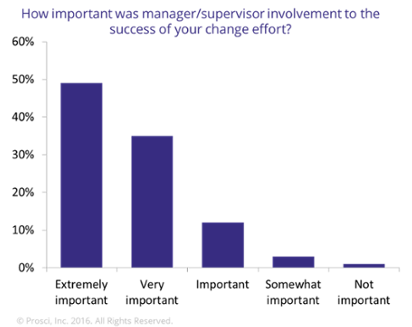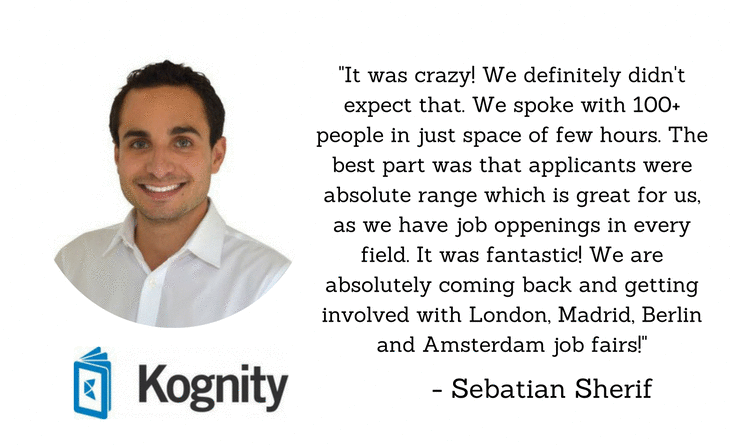What’s the most difficult part of just about every technology adoption? It’s not the technology. It’s the adoption. Your employees must actually use the technology, and getting their buy-in isn’t a guarantee. In fact, one survey conducted by strategy+business revealed that about 50% of manufacturers believe their employees are not open to digital change. Thus a thoughtful change management plan must accompany any IT initiative.
Managers play an important role in change management and ensuring that their direct reports embrace new technology, so it’s critical to get their buy-in before they introduce the technology to other employees. In a Prosci study of 575 change leaders, 84% ranked manager and supervisor engagement as “extremely important” or “very important” to project success.

A new role for managers
Managers on a factory floor have plenty of daily responsibilities, and change management isn’t usually one of those. Yet they’ll be on the front lines of change management for their direct reports, with multiple responsibilities that are likely outside their expertise:
- Managers are the most appropriate people to communicate changes to their direct reports. While they should receive relevant information and talking points from senior leadership, managers are better equipped to deliver messages in a way that will resonate with their employees.
- Managers’ level of acceptance for change will directly impact their employees’ perception of (and potential resistance to) that change. Managers, then, must be more than messengers. They must be enthusiastic advocates for the change ahead. They must also be prepared to address employees’ reservations and concerns to build support for change.
- The introduction of new technology changes daily processes and procedures, and employees will look to managers to support their adjustment. Managers will invariably act as educators and coaches as they guide their employees through issues that might hinder effective adoption.
- Managers will be responsible not only for communicating the progress of an IT initiative with their staff, but also for communicating with the project management team. They are uniquely positioned to act as a liaison, bringing back insights on usability and functionality, particularly during the implementation phase.
It’s clear that a manager’s role in change management will require wearing multiple hats—in addition to fulfilling all their regular duties. But before managers can act as effective change managers, they must first understand and accept how the change will affect them.





